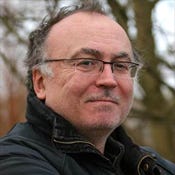U.K. Mobile Brand EE Makes LTE Land GrabU.K. Mobile Brand EE Makes LTE Land Grab
U.K.'s first LTE provider announces ambitious plan to double 4G network connection speeds in 10 major British population centers, with more to follow.

British mobile brand EE has announced plans to double the speed and capacity of its 4G network services for both new and existing customers this summer.
That boost is coming to 10 of the biggest British cities: London, Birmingham, Bristol, Cardiff, Edinburgh, Leeds, Glasgow, Liverpool, Manchester and Sheffield. This represents a subset of the 40 cities in which EE offers consumer LTE, and the company has promised to double the list to 80 markets by June.
"We are ensuring the U.K. remains at the forefront of the digital revolution," said EE CEO Olaf Swantee. "Having already pioneered 4G here, we're now advancing the country's infrastructure again with an even faster, even higher-capacity network, and at no extra cost to our customers." Swantee added that the boost will also provide developers with the quality and speeds needed to develop the next wave of "killer 4G apps." "Whatever innovations they come up with, we're ready."
[ British telco BT uses grant money to provide fiber-optic connections to northern U.K. Read more at U.K., BT Push Broadband To Rural Scotland. ]
EE is currently the only British telco offering 4G (LTE) services in the U.K. market. The company, which comprises two older brands, T-Mobile and Orange, says the move to "double-speed 4G" will deliver average download speeds of 20 Mbps, up from its current average of 8 to 12 Mbps.
According to EE, the performance boost is the result of doubling the range of 1800-MHz spectrum bandwidth it currently dedicates to 4G, from 10 MHz to 20 MHz. The company is also preparing to test "carrier aggregation" technology, which combines spectrum from different bands to extend LTE performance, speed and capacity. As the technology currently stands, EE said, 130 Mbps is the maximum user data speed seen in lab conditions for a 2x20-MHz 1800-MHz network deployment. This equates to a "physical data rate," or headline speed, with overheads of 150 Mbps, as defined by standardization groups.
EE hopes to see an increase in mobile data traffic of up to 750% over its network between now and 2016. "Mobile users in the U.K. have a huge appetite for data-rich applications, and this will only grow as people become more familiar with and reliant upon next generation technologies and services," said Swantee. Since the debut of 4G service, he added, video now accounts for 24% of all traffic on EE's network -- significantly more than on 3G. Maps, mobile commerce, sat-nav tools and cloud services are all seeing a similar rise.
Some observers have pointed out that EE is attempting an LTE land grab, as the company will face competition from rivals Vodafone and O2 by fall, following the U.K.'s 4G auction earlier this year. Others have also swiped at the company for prioritizing the 4G market at the expense of 3G customers -- a charge that has some potency in a country with many 'not spots,' or areas with poor mobile broadband, SMS or cell phone reception.
EE declined to specify exactly how many LTE customers it has actually signed since it launched 4G service last October, though the company said it is on target to sign up a million 4G customers by the end of 2013.
According to Matthew Howett, telecoms regulation analyst at British-based industry analyst group Ovum, EE's plan is a smart one. "Not content with merely being the UK's first 4G network, EE is also defining itself as one of the boldest," he said. "By doubling the amount of spectrum it is using for 4G, it will effectively double the speed and capacity of the network. Given EE's large and contiguous holding of spectrum at 1800MHz, this puts it in a very strong position and makes it more difficult for its peers to play catch-up."
Howett continued, "While there may be few applications that need speeds of up to 130Mbps today, the point really is that there almost certainly will be in the future -- and by doubling the amount of spectrum set aside for the 4G deployment today, the network should have the capacity to support an increasing user base in the months to come without impacting on the customer experience."
Howett added that slamming EE for possible slow adoption of its new service might be missing the point. "A first mover has something of an uphill struggle trying to convince consumers to go out there and buy into something they have no experience of using," he pointed out.
According to Ovum, the best bet for EE and its competitors is to explain the advantages of its networks in ways that consumers understand and can relate to -- for example, emphasizing faster downloads for HD movies and improved streaming of TV and radio playback during peak times.
Our 2013 Unified Communications Survey shows projects stalled. Here's why, and how to whip up more enthusiasm. Also in the new, all-digital UC Doldrums special issue of information: The WebRTC open source project promises to make real-time communications easier, but it faces an uncertain future. (Free registration required.)
About the Author
You May Also Like






